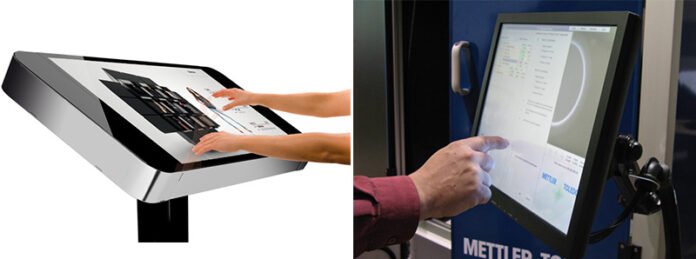A touch screen is an electronic display that incorporates an input and output device. The screen is usually layered over an electronic visual display, such as an LCD, AMOLED, or OLED. The entire system includes the display, the user interface, and other hardware. Here are some common applications for touch screens. These applications include smartphones, tablets, and laptops. Infrared LEDs are a popular touch screen technology. LEDs are more energy efficient than LCDs, and they are also more expensive than other materials.
Infrared LEDs
An infrared touch screen is a computer screen that detects the position of your fingers by using a curtain of infrared LEDs. This technique is much cheaper than a capacitive display and could be a better choice for touch screens that need to be sensitive to finger conductivity. Continental Interactive Technologies claims that this type of screen is also capable of handling multitouch functions. The project is available on GitHub.
Infrared touchscreens use an array of X-Y infrared LEDs along the edges of the display. This light beam is interrupted when an object touches the screen. A photo transistor detects the disruption in the light beam and transmits the coordinates to the PC. It can be used in many applications, including commercial transportation, medical instrumentation, and ATMs. This type of touchscreen can be scaled up or down without the need for an intermediate overlay. In addition, it does not require touch pressure to activate the touchscreen. Infrared LEDs also provide a much higher level of optical clarity than resistive touch screens.
Resistive touchscreen
The resistive touchscreen is one type of touch-sensitive computer display. It consists of two flexible sheets covered with a resistive material that are separated by a microdot or air gap. A resistive touchscreen’s touch-sensitivity is dependent on the amount of pressure applied to it. Therefore, it requires a higher amount of force than a capacitive touchscreen. Its high sensitivity is one of the key benefits of resistive touchscreens.
In order to use a resistive touchscreen, a user must apply pressure to its four corners or center to calibrate the touch-screen. To do this, the user can use a lookup database to identify the amount of force needed to press the screen. The device then interprets the pressure as a touch. Because of this, resistive touch screens are used in many environments. This technology is especially useful for underwater machinery and agricultural equipment. Another reason why OEMs choose resistive touch screens is price. Manufacturers can save a lot of money by choosing resistive touch screens.
Double-tap
The touch screen has two distinct gestures. Double-tap activates the focused item, much like the enter key on a keyboard. Triple-tap reveals a quick menu with relevant commands, global settings, and device status. Each gesture has different functions, and each one has its own specific purpose. If you’re confused about which gestures to use for which purpose, read on. Listed below are some common ones.
Touch and hold
There are several ways to configure the Touch and Hold feature of your device. If you have an Apple iOS device, you can use the Touch and Hold directive to trigger events based on the places you touch. The device will respond to the place you touch first, and the last one that you touch. The time between multiple touches can be adjusted. Once the Touch and Hold feature is configured, you can use Intuface Support to configure your touch device.
To change the delay for touch and hold, go to Settings and then to Accessibility. Tap Touch and Hold Delay and choose a time between when your finger touches and when it is held. Delaying the delay until touch and hold occurs will help prevent accidental touch and holds. Touch and Hold delay is also available in Android. You can also find information about it on the manufacturer’s website. However, it is better to set a longer delay for touch and hold.

